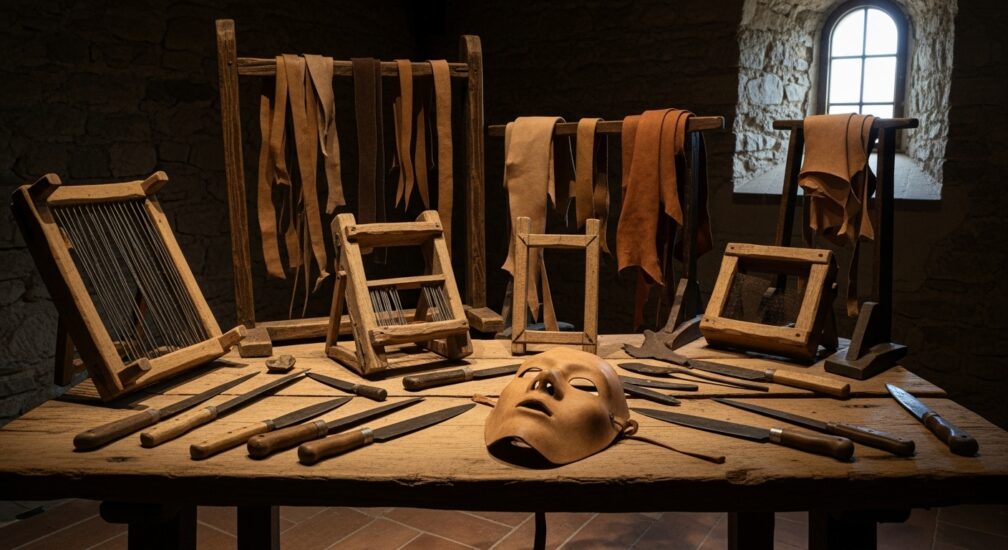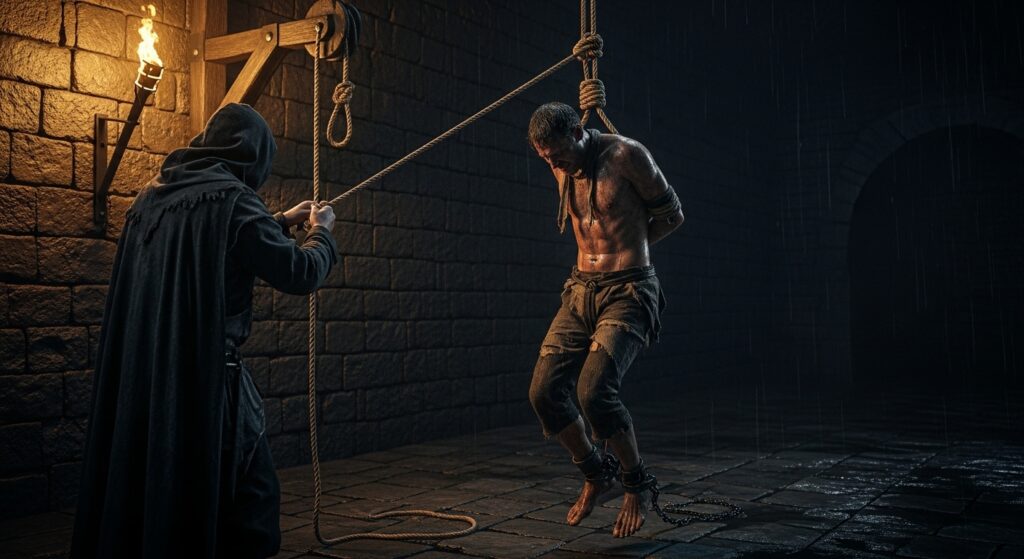The Ritual of Punishment and the Logic of Terror
During medieval and early modern Europe, punishments were designed not just to kill, but to take apart the human body in public displays of fear, authority, and complete power over life. Death by sawing, to be flayed alive, and to be drawn and quartered — all professed this exquisite, extreme medieval punishment to be intended to violate the flesh and the spirit, to take execution and contain a sort of state performance. Mercy under these conditions was an impossible feat, likewise, these times of torment were spectacles, presumably drawn out to engage audiences in conformity, and of stark warning for plotting disloyalty.
The levels of horror — dismemberment punishment — also indicates deeper truths about the past: violence was not just in language, it was in governance. Each cut, each pull and tug, amidst moments of turmoil reflected not only brutality but a faith in punishment as ritual — slow modes of condemnation between the ruling class and the people.
Sawing Execution: A Punishment of Division
Empire, and portions of Asia. During sawing, the process began with the victim being hanged upside down, which was believed to keep the brain in the ‘oxygenated’ or conscious state longer. The executioner would then use a long saw with the saw handles on either side of the body and allow gravity and blood flow to establish slow pain in order to induce prolonged agony before rapid death.
The medieval practice of sawing torture was not exclusively about killing the accused, but the display of the consequences associated with both treason, heresy and violent crime. Severing the body had symbolic motives, as it was a physical action and reminder of how the state separates the loyal and the condemned. The executioners often performed sawing in public executions, where dismemberment served as deterrent in the framework of punishment and disturbed political messages.
In these moments, the executioner became an instrument of authority, and the victim a warning carved into memory.
Flaying Alive: Skin as the First Layer of Meaning
There are few punishments that engender such depth of loathing and dread as flaying alive — literally peeling off someone’s skin, the very distinction between person and world. It was practiced in Assyria, medieval Europe, and in some modern-authoritarian regimes, flaying punishment meted out to those who betrayed, with sacrilege, or committed murder. Its power lay not only in profound discomfort but rather in symbolic nudity.
To flay someone in medieval times was to motivate the erosion of identity, the peeling away of identity layer by layer, to expose one’s anatomy and primal human sense of vulnerability. Chroniclers document flay torture methods where executioners gradually went about their work, sometimes beginning with the face, hands, or back, reducing the body to a living representation of the rage of the ruler.
The execution of the flay was public by design. Skin was sometimes exhibited on poles at city gates as a permanent representation of the cost to defy authority. Flaying punishments also blurred the boundaries between scaffolding justice and butchery. Governance often relied on cruelty carefully managed.
The history of flaying demonstrates a method that is politically useful: trying to eliminate the traitor, not just from the earth violently, but to unmake symbolically.
Quartering: When the Body Became a Battlefield
The most complex of medieval punishments was drawing and quartering, a multi-phase execution primarily used in England for the crime of high treason. It was designed to bring together humiliation, public quartering, and dismemberment in a single ritual meant to terrify society at deep structural levels.
In a typical execution of this type, the condemned person was dragged to the site of execution, hanged until near-death, mutilated, and then finally pulled apart, either by horses or from mechanical force. The medieval mindset toward quartering was organized around division — literally tearing the traitor apart from society. It was a complex choreography of suffering and symbolism, where violence served as the state power’s message.
The authorities employed knew inherently that these punishments were spectacles. Each member of the crowd was able to observe each part, from the initial torment to the final execution, reinforcing this common experience of fear and collective loyalty. The total process was fundamentally political theater, meant to uphold regimes through terror rather than compassion.
The Function of Public Ritual and the Anatomy of Fear
Sawing, flaying, and quartering did more than kill; they shaped the medieval concept of justice. Pain became performance, and execution became a ceremony of oppression and subjugation. These punishments expressed not only rage but ideology — declaring the inviolability of the state and the fragility of the human body.
To modern eyes, such punishments appear unimaginably cruel. Yet in their time, they served as instruments of reprisal, tools of control, and methods of reinforcing order. They created a legacy of fear that defined entire eras of governance, leaving behind stories of carnage, mortality, and unrelenting authority.
Torture Remembered in Modern Exhibits
Today, surviving descriptions and reconstructions of these punishments can be explored at the Medieval Torture Museum in Chicago, where devices of dismemberment and coercion illustrate how terror once shaped law.
The Medieval Torture Museum in Los Angeles expands on this legacy, revealing how suffering was used strategically as a form of social control and political messaging.
At the Medieval Torture Museum in St Augustine, visitors encounter artifacts and narratives that confront the darkest tools ever used to enforce obedience, exposing how cruelty evolved into spectacle.
For those seeking a deeper understanding of medieval justice, ritual punishment, and historical methods of coercion, the museum’s blog offers additional insight into the harsh realities of past civilizations.
The Legacy of Brutality
The stories of sawing, flaying, and quartering illuminate chapters of history when punishment became an ordeal of unimaginable agony. These methods reveal how states wielded terror to maintain control, shaping societies through fear rather than compassion.
Remembering such practices today is essential — not to shock, but to understand the fragile boundary between justice and cruelty. By studying the darkest punishments of the past, we confront the difficult truth that power, when unchecked, can turn the human body into a canvas of suffering.






